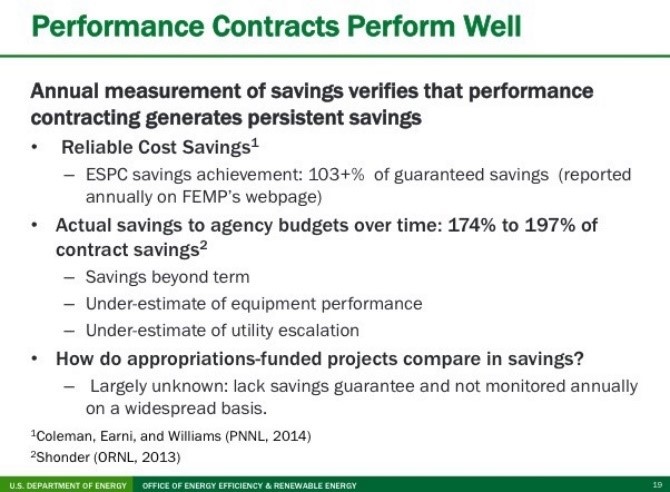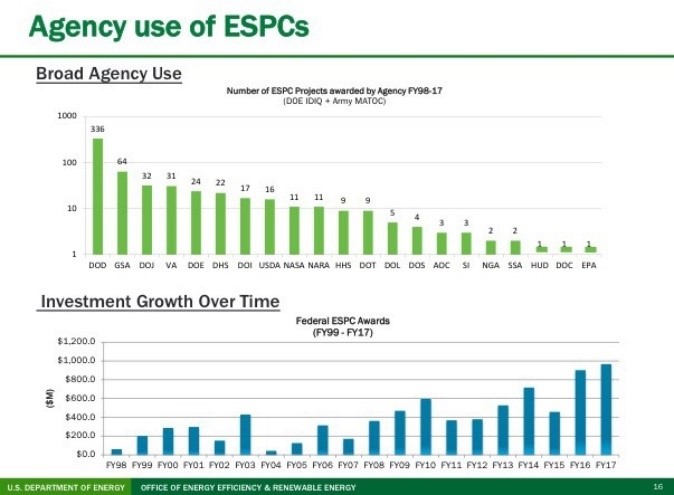Updating Infrastructure Could Cut Energy Waste – Or Lock-In Generations of High Costs
Let's Save Energy
Alliance to Save Energy's Blog

“We shouldn’t forget that part of the reason why the U.S. has enough oil to export today is not just because we produce it, but because we use so much less of it than we thought we were going to.”
-- Sarah Ladislaw, Center for Strategic and International Studies
It seems these days you can’t swing a dead cat in D.C. without hitting someone talking about infrastructure. It may be the most talked about, least acted upon issue in town, which is saying something. Two months into 2018, there have been multiple infrastructure proposals from both the majority and minority parties in Congress, with more rumored to be pending; many infrastructure “guiding principles” documents; and countless barrels of media ink surrounding the discussion. No specific legislation has advanced yet, though.
What’s not getting a lot of ink is what’s at stake for energy efficiency – which is a lot. The infrastructure we build now could be in place for decades to come; will it be energy-efficient? Or will we build inefficient infrastructure that leaves taxpayers, consumers and businesses paying higher energy costs?
I’ll take a closer look at several of the proposals on the table, from Congress and from the administration, in later posts. But here, I’ll lay out the Alliance’s policy solutions – what we’re looking for in any bill. As a bipartisan organization, we hold the tenets that policy proposals should be proven and actionable, consensus-based, impactful and cost-effective. With these criteria in mind, here are three Alliance priorities for any infrastructure policy update.
(1) Require building to updated energy codes, and using high-efficiency equipment.
 Concerned about energy security? Reliability? Sustainability? If so, addressing the energy consumption of our nation’s building stock is imperative. Buildings account for roughly 40 percent of U.S. primary energy use and 76 percent of the electricity we use. As we invest in rebuilding the very places where people and commerce meet, we should ensure these structures meet the highest standards for efficiency. The best place to start a nationwide infrastructure push would be to incentivize states to adopt current building energy codes.
Concerned about energy security? Reliability? Sustainability? If so, addressing the energy consumption of our nation’s building stock is imperative. Buildings account for roughly 40 percent of U.S. primary energy use and 76 percent of the electricity we use. As we invest in rebuilding the very places where people and commerce meet, we should ensure these structures meet the highest standards for efficiency. The best place to start a nationwide infrastructure push would be to incentivize states to adopt current building energy codes.
The latest model building energy codes deliver 30 percent more efficiency than codes of just a decade ago, resulting in more than $5 billion in annual savings for U.S. homes and businesses. In addition, programs like ENERGY STAR do more than ensure that building components and consumer appliances are most efficient – ENERGY STAR certified new homes save up to 30 percent over typical new homes.
Unfortunately, the benefits of current model building energy codes and ENERGY STAR equipment are often missed in those states that do not require them. Any infrastructure plan should reward states and municipalities that embrace these benefits.
(2) Apply life-cycle cost-effectiveness analysis to projects lasting for generations.
Decision-makers focus on up-front costs when looking for return on investment. Unfortunately, there are considerable costs associated with a project, such as water and wastewater systems, that occur once the cement dries – in continued operations, maintenance and utility burdens. As a result, short-sightedness of policymakers can yolk unsuspecting taxpayers, ratepayers and consumers with these burdens for decades to centuries.
Missing an opportunity now to include energy- and water-efficient solutions ensures our children and grandchildren will be saddled with energy waste. Sustainable asset management of these massive systems should consider costs that will be passed on to generations of Americans, and attempt to mitigate them. The federal share of infrastructure spending should reward system-level design that can reduce these costs and incentivizes solutions that address the water-intensity of our nation’s energy systems and the energy-intensity of our nation’s water systems – which can account for up to 40 percent of a municipality’s total energy bill.
(3) Expand opportunities for public-private partnerships, including performance contracts.
 At every level of government budgets are tight and traditional financing is not always available. Performance contracting provides up-front private financing of retrofits, rehabilitation or new equipment procurement for a share of future guaranteed energy and water savings. These agreements reduce the energy consumption in municipal and state facilities, universities and colleges, K-12 schools and hospitals, with no up-front appropriation of taxpayer dollars. A proven success, federal Energy Savings Performance Contracts (ESPCs) have not only achieved 103 percent of the savings contractually guaranteed, but the agencies have realized 174 to 197 percent of the contractually-guaranteed savings over time.
At every level of government budgets are tight and traditional financing is not always available. Performance contracting provides up-front private financing of retrofits, rehabilitation or new equipment procurement for a share of future guaranteed energy and water savings. These agreements reduce the energy consumption in municipal and state facilities, universities and colleges, K-12 schools and hospitals, with no up-front appropriation of taxpayer dollars. A proven success, federal Energy Savings Performance Contracts (ESPCs) have not only achieved 103 percent of the savings contractually guaranteed, but the agencies have realized 174 to 197 percent of the contractually-guaranteed savings over time.
 DOE has identified additional opportunities to potentially deliver billions of dollars in benefits from reduced energy and water consumption that won’t be realized without increased utilization of performance contracting, or alternatively, significant up-front appropriations. While Congress has allowed federal agencies to use performance contracts, any infrastructure plan should seek to maximize their benefits by instructing agencies to use them.
DOE has identified additional opportunities to potentially deliver billions of dollars in benefits from reduced energy and water consumption that won’t be realized without increased utilization of performance contracting, or alternatively, significant up-front appropriations. While Congress has allowed federal agencies to use performance contracts, any infrastructure plan should seek to maximize their benefits by instructing agencies to use them.
(Image source: DOE)
Looking Forward
If lawmakers advance infrastructure legislation, they must ensure that lifecycle costs are considered and minimized for generations of Americans who would be burdened by high costs if we get this wrong. The policy solutions are there – if only they are embraced.
RECENT BLOG POSTS
STAY EMPOWERED
Help the Alliance advocate for policies to use energy more efficiently – supporting job creation, reduced emissions, and lower costs. Contact your member of Congress.
Energy efficiency is smart, nonpartisan, and practical. So are we. Our strength comes from an unparalleled group of Alliance Associates working collaboratively under the Alliance umbrella to pave the way for energy efficiency gains.
The power of efficiency is in your hands. Supporting the Alliance means supporting a vision for using energy more productively to achieve economic growth, a cleaner environment, and greater energy security, affordability, and reliability.



